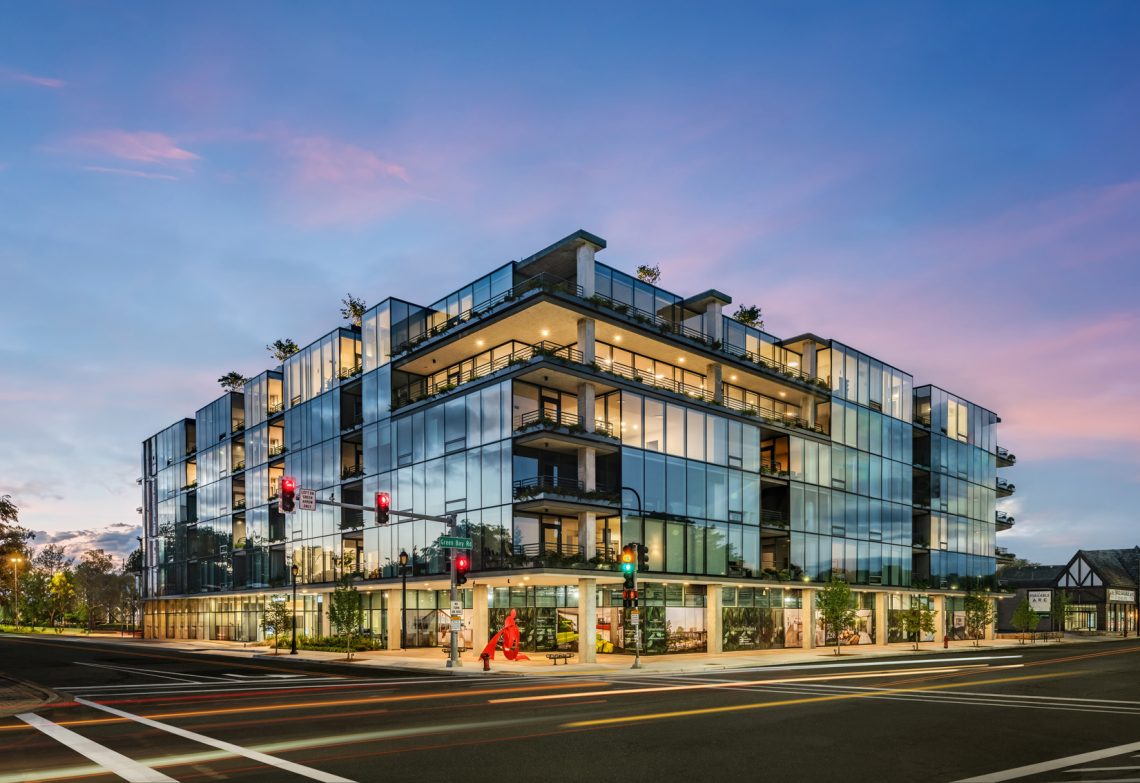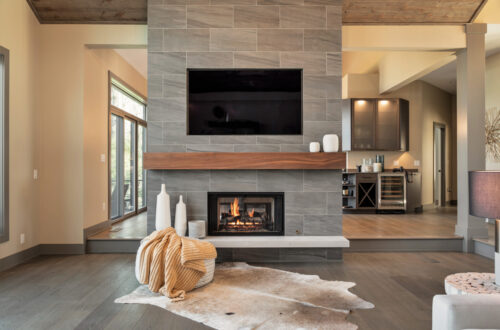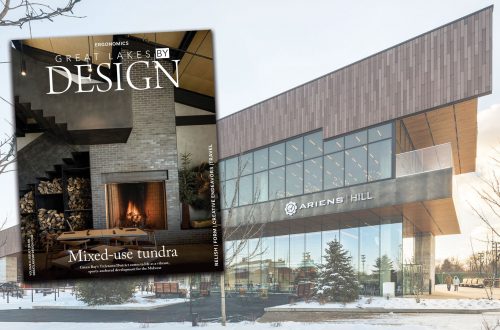In 2023, Optima, Inc., a family-owned, vertically integrated and design-driven real estate development firm based in Glencoe, Illinois and Scottsdale, Arizona, realized a multi-family, 100-unit apartment building in downtown Wilmette, Illinois, delivering rental residences and an amenity-rich development to the North Shore market. For the privately-held firm, the residential and commercial project is more than its visual composition of glass and concrete, and contemporary-inspired vernacular rooted in modernist tradition, but also a design and lifestyle solution for those wishing to downsize and remain in the community—and marks the inaugural debut of its proprietary Vertical Landscaping System to the Midwest.
“Each one of our developments is distinctive and customized to its physical location with shared signature aesthetics, including strong geometric shapes, inherently beautiful building materials, and open, flexible floor plans. Optima Verdana is no different—it is a 21st century design with vibrant, sustainable architecture, high-quality construction, and extensive amenities and services,” said David Hovey Jr., AIA, president and chief operating officer at Optima, Inc.
“One of the most exciting parts of Optima Verdana has been bringing the Vertical Landscaping System we developed in Arizona to Illinois’ four-season climate. We planted test beds and evaluated different plant material for over two years to ensure the plants would thrive during all four seasons, stay green all year round, and create the cascading motif we sought,” Hovey added.
Featuring 100 units of one-, two-, and three-bedroom apartments and more than 8,000 square feet of street-level retail and commercial space along Green Bay Road in Wilmette’s Village Center, Optima Verdana is the latest in the firm’s portfolio of work spanning multi-family condominiums, townhouse developments, and single-family homes across locations like Illinois, Arizona, and New Zealand. Founded in 1978, Optima, Inc. is the creative brainchild of the husband-and-wife team of David C. Hovey Sr., FAIA, and Eileen Sheehan Hovey, repositioning architecture and design as a business model in which they contained control of the entire process as owner, architect, developer, and general contractor.
“When my father, [David C. Hovey Sr.], was an architecture student at Illinois Institute of Technology, he envisioned an approach that enabled the architect to have greater control of design by vertically integrating the different functions of the real estate development process. By acting as the architect, developer, general contractor, and sales and property manager, Optima can ensure the architecture process is unaffected by the traditional developer-architect-general contractor relationship,” Hovey said.
Hovey Sr., who studied under a program built by Mies van der Rohe and then mentored with Arthur Shigeo Takeuchi—a pioneering architect and tenured faculty member at Illinois Institute of Technology College of Architecture—served as both architect and developer in the firm’s early years. Eileen Hovey, meanwhile, ran both the sales and marketing departments, and ultimately served as chief executive officer of its brokerage entities, Optima Real Estate Inc. and Optima Realty Inc. By 2000, the firm expanded outside of Chicago to its secondary market of Arizona, and more recently, the firm has transitioned to its next generation of leadership with David Hovey Jr. serving as president, chief operating officer, and principal architect; and Tara Hovey as president. Hovey Jr. also founded Optima DCHGlobal Inc. after patenting a modular, prefabricated building system that utilizes connector plate technology for quick, efficient, and sustainable construction. In 2021, Optima Inc. was also recognized as Firm of the Year by the American Institute of Architects Chicago.
“My father’s design philosophy has been that architecture is about structural expression, technology, material honesty, and function. His favorite quote about architecture is Vitruvius’ ‘firmness,’ or structure, ‘commodity,’ or function, and ‘delight,’ or beauty. Our design-build philosophy is to continually improve all aspects of our vertically integrated system to design and build each project with the highest-quality materials, systems, and techniques,” Hovey said.
“Some key principles that are important to us are that we believe great architecture and design inspires people and improves their lives and that our projects continue to progress architecturally and programmatically with continued attention to sustainability and the connection with nature. Also, we believe we are providing vibrancy to ever-evolving communities as well as meaningful economic impacts and job creation,” Hovey added.
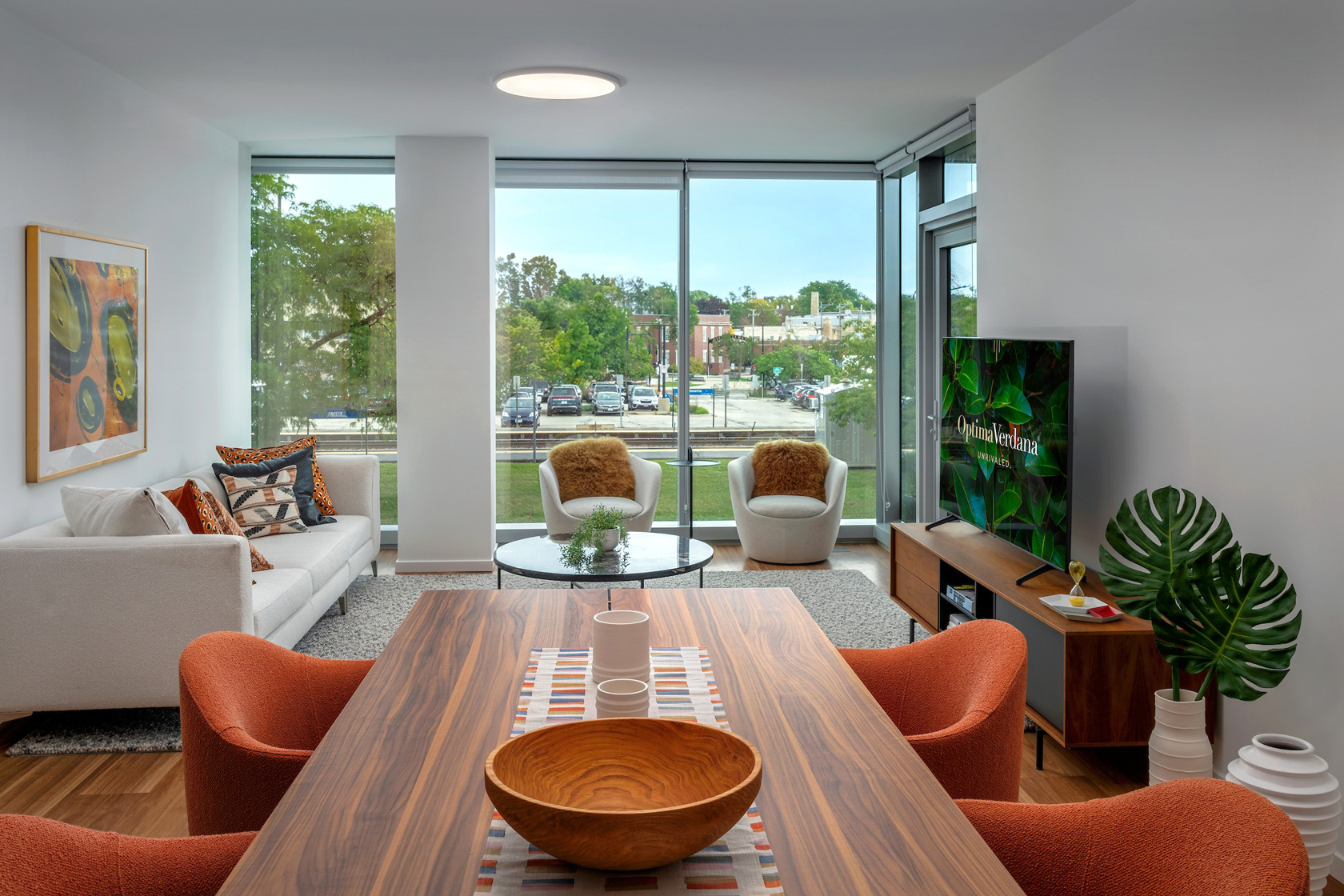
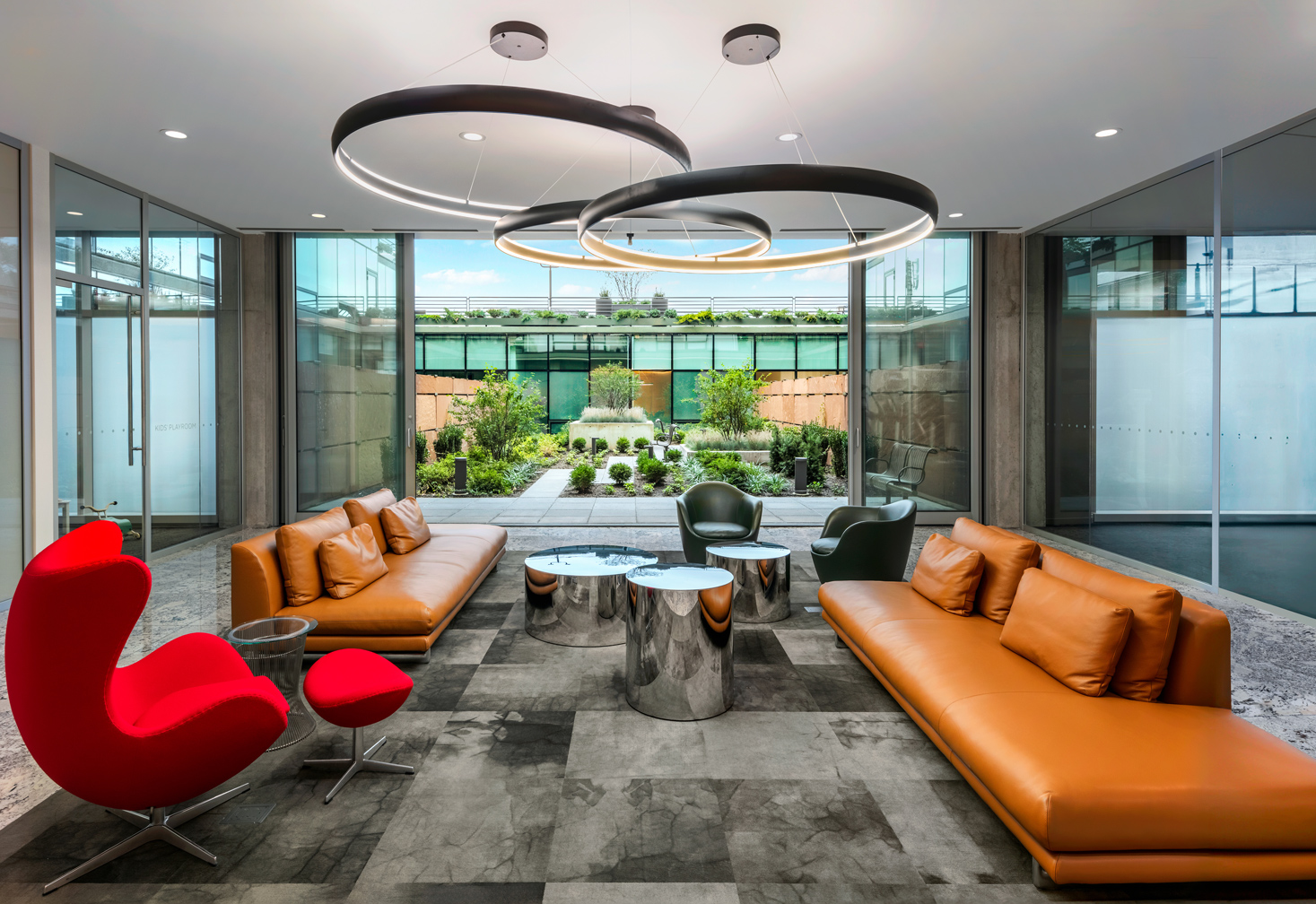
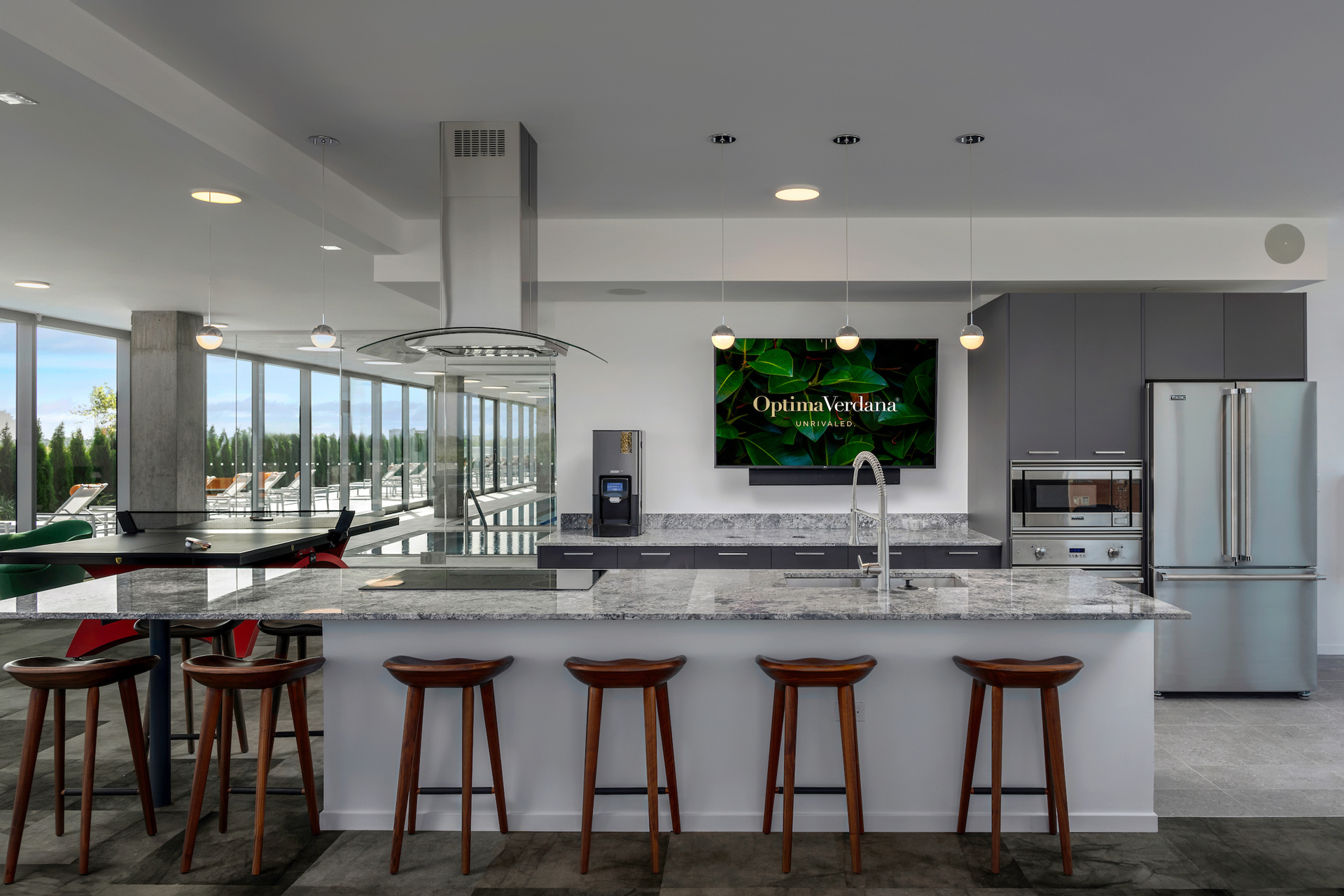
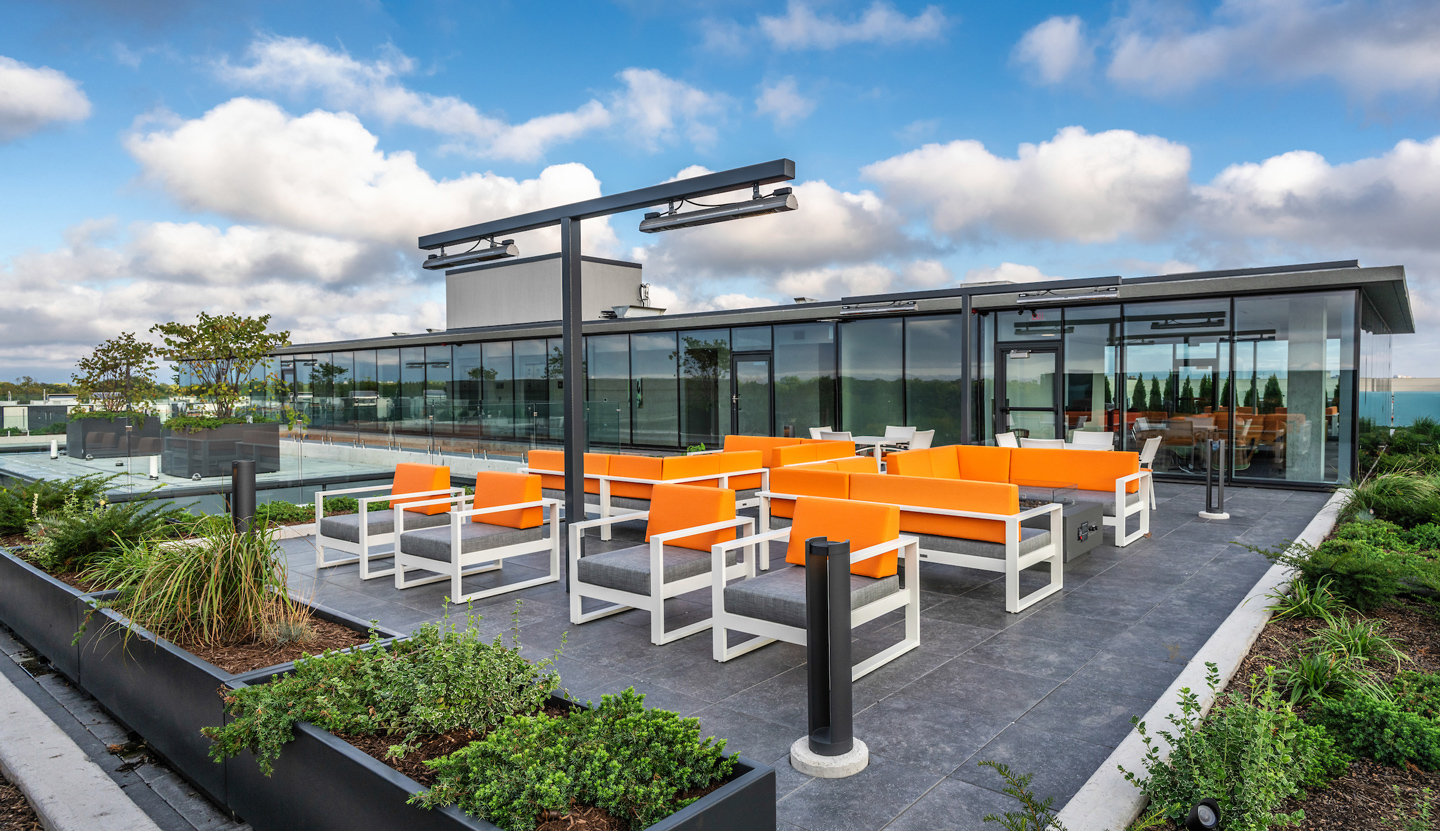
In Wilmette, Optima Verdana also builds on the firm’s presence in the Chicago North Shore region, which as Hovey noted began in the early 1980s and in the 1990s for Wilmette, specifically. When the firm found the site for the now existing development, Hovey said it was ideal within the thriving downtown of Wilmette due to its walkability, proximity to shopping, dining, and entertainment, and access to rail transportation to downtown Chicago and the lakefront.
“There was also a need in Wilmette for a city-level luxury community for those seeking to sell their homes and downsize, but wishing to remain in the community,” Hovey said. “The building provides commercial space along Green Bay Road, which activates the streetscape and further enhances the vitality of the Village Center. Optima Verdana provides high-end rental residences for those seeking an exceptional North Shore location.”
In addition to its 100 units and street-level retail space, Optima Verdana has 173 parking spaces and 28 parking spaces for public use, electric vehicle charging stations, 1,500-square-foot residential courtyard, a rooftop sky deck and pool, private terraces in select units, and a suite of other amenities like executive conference rooms, spa and sauna, garden lounge, fitness center, library lounge, children’s playroom, business center, golf simulator, and an indoor pickleball and basketball court—and a custom, eight-foot-tall sculpture by David Hovey Sr. titled “Curves and Voids” near the entrance. But it also has green features, sustainable technology, and biophilic thinking, and while the driving idea behind its interior program was to build high-quality residential living units, there was also an intentionality in its relationship to nature.
“One of our main design principles is the importance of connecting the interior with nature,” Hovey said. “We also wanted to set new standards when it came to green features and biophilic thinking—making Optima Verdana our most sustainable Chicago project to date. We built Optima Verdana to achieve two Green Globes, which we were recently awarded. Green Globes is a comprehensive, science-based certification system that is an alternative to LEED. It evaluates the environmental sustainability, health and wellness, and resilience of all types of commercial real estate.”
Hovey noted some of its green features comprise bird-friendly glass on the first three floors of the structure and its participation in “Lights Out Chicago” in an effort to protect birds during migratory periods and reduce bird collisions with glass. The building also uses green concrete that is manufactured using residual materials requiring less energy for production while providing equal durability and lifespan to its more traditional counterpart. There are also pre-installed EV chargers in the parking garage, a high-efficiency VRF heating and cooling system, large balconies, floor-to-ceiling glass curtain wall to allow natural light to flood the interior layout—and Optima’s signature Vertical Landscaping System that features coniferous plantings along private terraces to provide cascading, year-round exterior greenery on the façade.
“We have been incorporating biophilic elements since our inception through green roofs, courtyards, and, beginning in the early 2000s, with our signature Vertical Landscaping System. The floor-to-ceiling glass curtain wall is draped in a veil of indigenous plantings that fall gently over it. These coniferous plants provide year-round greenery, a haven for urban wildlife, promote evaporative cooling, re-oxygenate the air, reduce dust and smog and ambient noise, detain stormwater, and thermally insulate and shield residents from the sun,” Hovey said.
Optima’s Vertical Landscaping System emerged in response to how the natural land influences, affects, and works in tandem with the built environment. The system has been integrated in many of its Arizona-based projects, such as Optima Kierland Center and Optima Camelview Village, and is intended to serve as more than an aesthetic feature, and also as a functional solution that continually engages human interaction with the natural world. The landscaping system has also been proposed for its potential adjacent development known as Optima Lumina, on a former Imperial Motors site. The project has undergone six significant design revisions since September 2023, and now features 128 residential units planned as condominiums, roughly 5,700 square feet of designated commercial and retail space, and about 6,275 square feet of open and plaza space. Now considered a standalone building, Optima Lumina lends a stepped terrace impression as it ascends vertically and incorporates terracotta on its façade in its latest proposal.
“We initially designed the adjacent project, known as Optima Lumina, as a second phase to Optima Verdana with the same architecture that was a complement to Optima Verdana. The feedback from the Village and the neighborhood was that they desired a standalone building that had its own character and was contextually different than Optima Verdana. While Optima Verdana is designed with an all-glass curtain wall system, Optima Lumina is designed with an infill window wall system with almost 40 percent less glass on the exterior wall with the addition of terracotta panels,” Hovey said. “Private terraces, strategically located within the undulating façade, create shadows and provide visual interest on all sides of the building. As the building extends north along Green Bay to Washington Avenue, additional step-backs at levels four and five occur in response to its context.”
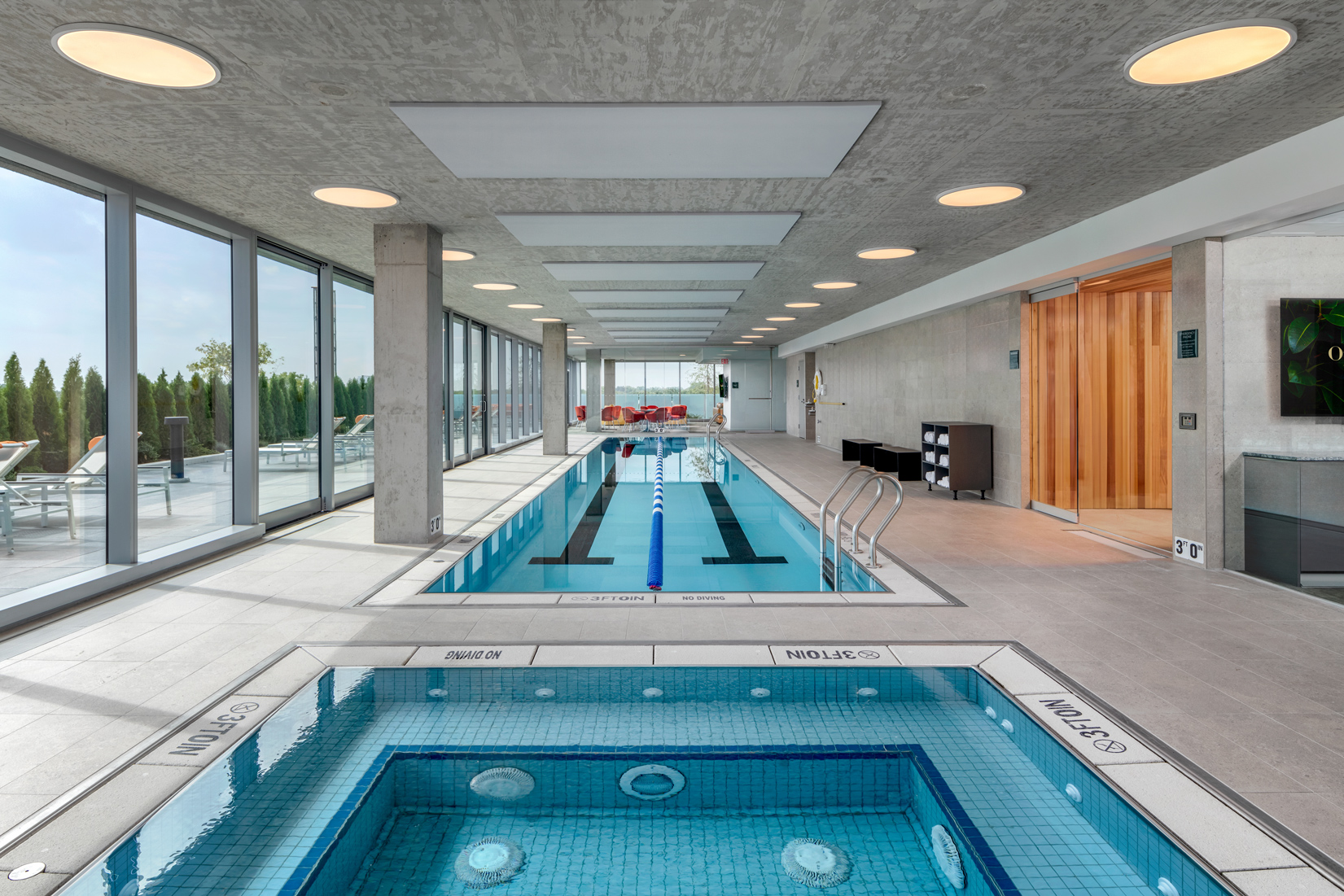
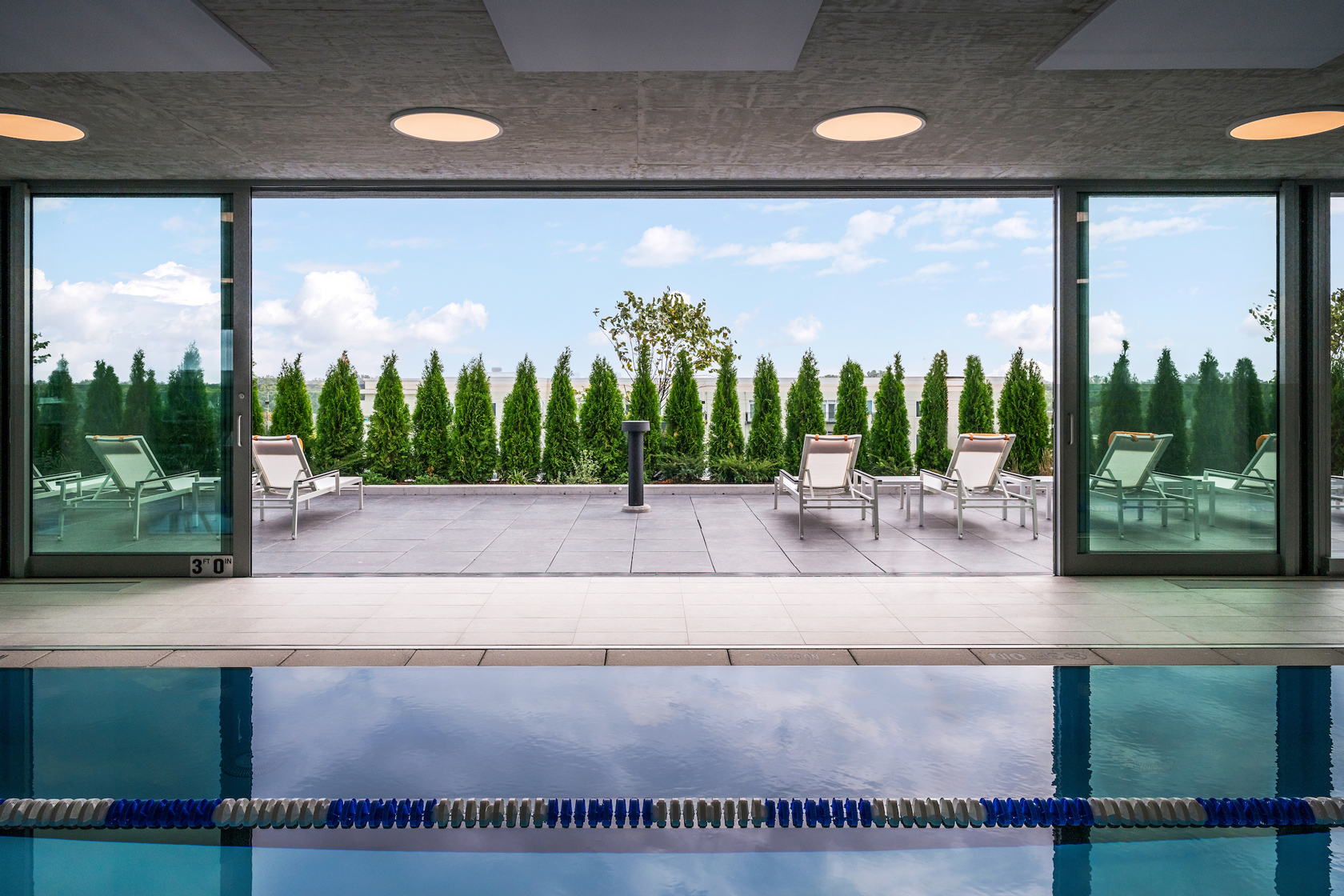
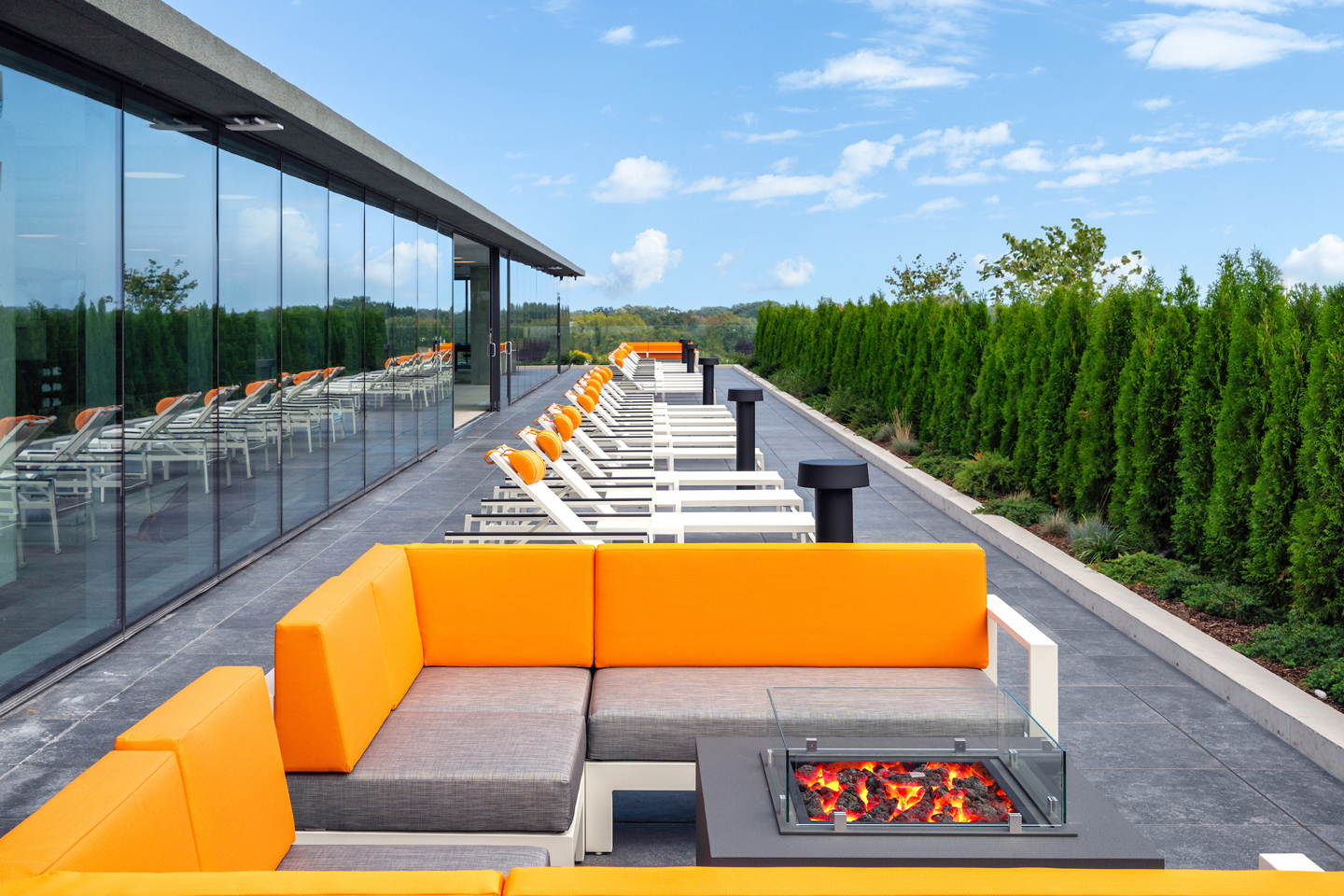
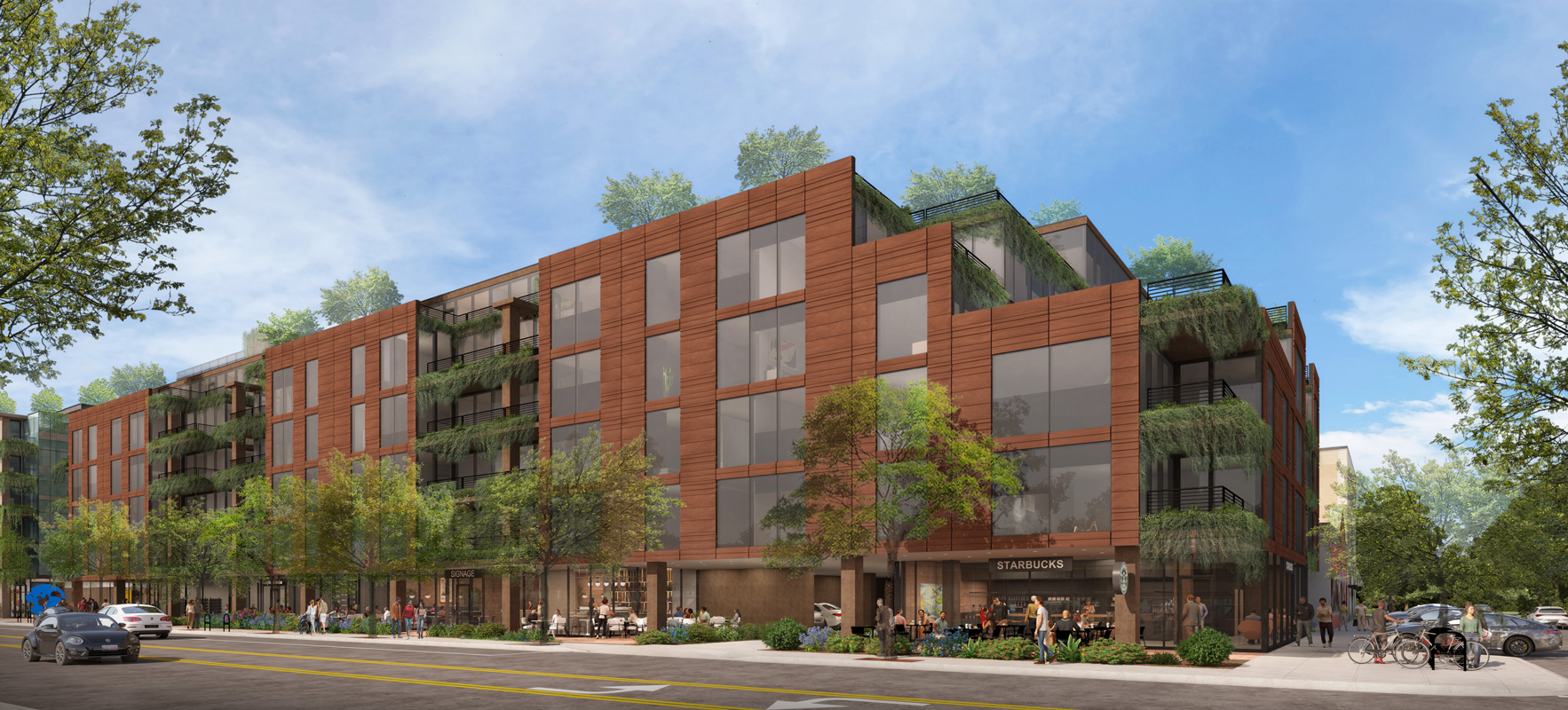
While the dialogue is ongoing with the Village, residents, and Appearance Review Commission for Optima Lumina, as the firm continues to respond to feedback and make changes to the new addition to the community, Optima Verdana has already hit more than 93 percent leased. And for Hovey, community is about more than a shared location or a common interest, but rather a sense of belonging, of connection, and of mutual support and respect.
“It is a feeling of being part of something bigger than oneself, of contributing to a collective purpose and vision. It is also a source of diversity, learning, growth, and innovation. We believe that community is essential for well-being and that is greatly impacted by architecture and properly programmed, mixed-use residential developments. As a real estate developer, we are not only building structures, but also creating spaces where people can live, work, and create authentic connections,” Hovey said.
“Each of our developments creates an ecosystem that will benefit the community, cultivating engaging and enhancing connections between people and the surrounding neighborhood in beautifully designed spaces. We are inspired by the potential for both community and design to create positive change. By creating spaces that enhance community, we can also create spaces that promote well-being, happiness, and productivity, as well as sustainability, innovation, and human connection,” Hovey added.
Text: R.J. Weick
Photography: Michael Duerinckx, Courtesy of Optima, Inc.
First published in Great Lakes By Design: In Flight, Volume 8, Issue 2

